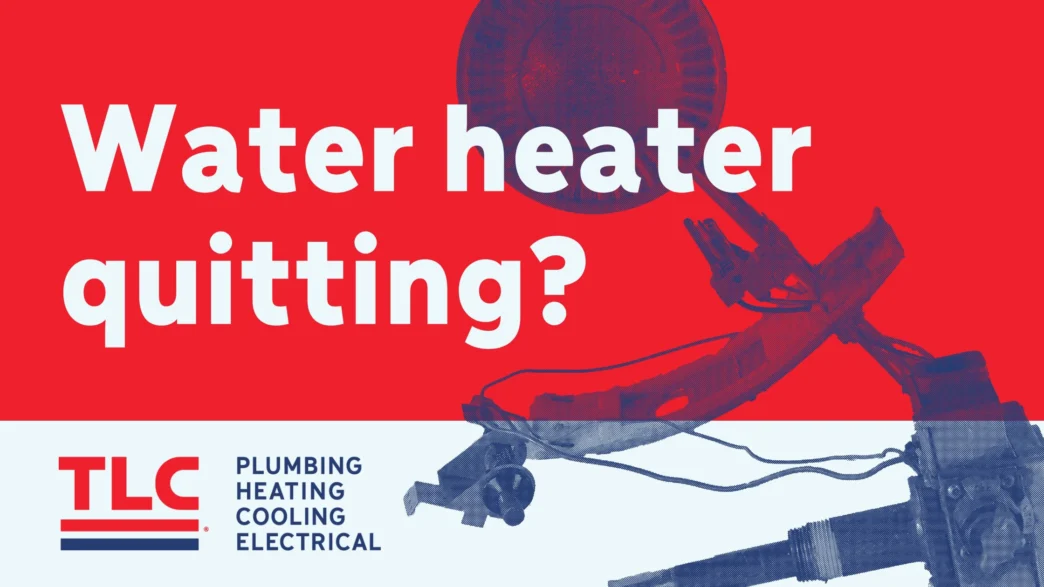Nobody wants to think about their water heater failing on them. Most of us take our water heaters for granted until we’re hit with freezing water on a chilly morning. Knowing ahead of time what the signs are can keep you from being caught by surprise!
Four signs that your water is about to give out
You notice a difference in heating capacity
Do you feel like you have less hot water? For example, you may be able to take a 20-minute shower when your heater is new. Over the years, that may slowly decrease until you might have a hard time taking a 10-minute shower. If your hot water runs out quickly, then you have a heating capacity problem.
You might also find that it takes your water heater longer and longer to heat water up. This can mean a problem with the burner assembly or gas valve, which can be expensive to fix or replace. When your water heater is over 10 years old, it usually makes more sense to replace the heater instead of fixing it.
If you notice that the heating capacity has dropped, it’s a sign that the water heater is losing its efficiency. Some homeowners fix the heating capacity problem by turning the water heater up. This is a temporary fix that doesn’t deal with the root problem. The problem is with the water heater itself. There’s also a risk of burning yourself when you turn it up. TLC’s plumbing experts recommend that you don’t go above the recommended setting. The recommended setting keeps the water temperature below scalding, and if you set it higher, you risk a burn.
The water heater leaks
If you walk into the garage or closet where your water heater is located and there’s water everywhere, it’s a red flag! A leaking water heater usually means it needs to be replaced. Sometimes it’s something minor, like a loose water line connection. More often than not, it’s a sign that the tank is cracked or rusted out. The older the water heater is, the more likely it is that this could is the case. If it is cracked, the water heater needs to be replaced immediately! It can’t hold or heat water any longer.
The pressure relief pipe is dripping
Let’s start by defining what the pressure relief valve is. When water heats and cools, it causes the pressure inside the water heater tank to go up and down. The pressure relief is a valve and pipe connection that releases the pressure if it gets too high. The pressure relief pipe goes from the tank to the outside of the house. It is a ¾ inch copper line with an elbow (or bend) and is usually easy to find. You should be able to locate it by walking around the outside of your house.
If there is a steady drip of water coming from the pressure relief pipe outside, there are a few things that could be going on:
Pressure Relief Valve Failure
The pressure relief valve controls the flow of water from the water heater to the pressure relief pipe. If the valve breaks, it won’t stop the flow of water, even when the pressure is low. It needs to be repaired and maybe even replaced.
Water Heater is Over-Firing
Over-firing can cause the pressure relief pipe to flow. Over-firing means that the heating element is on for too long. This usually happens because the thermostat inside the water heater is calcified and isn’t reading the temperature correctly. The thermostat then fails to communicate with the heating element that it should turn off. This causes the water inside to overheat and the pressure relief pipe to run.
If your water heater is old, you have hard water or you’re concerned it might be failing, check the pressure relief every now and then to see if the water is coming out of the pipe. If it is, call a licensed plumber to check it out.
The water heater is 12 years or older
Everything has an expiration date. For water heaters, that date is usually around 10 to 12 years, and if you’re lucky, maybe 15. Rust and calcification are usually to blame for water heater failure at this age. Rust and calcification corrode the tank, causing leaks.
The bad news is: If your water heater is 10 years old or older, you’re at a higher risk for leaks. The problem with water heater leaks is that leaks can cause serious water damage if not caught right away. TLC’s plumbing experts suggest that you go ahead and replace it if your water heater is between the ages of 12 – 15, even if it hasn’t failed yet. An old water heater becomes a liability at that age because of potential water damage. If you’re not quite ready for that, it’s no big deal. Just keep a close eye on it.
Learn about the Kinetico Leak Detection valve that saves you from disaster!
The good news is: You don’t have to be taken by surprise. These four signs give you an early warning that your water heater is about to give out. Instead of an emergency replacement, you can plan ahead to replace your water heater. If you have any questions about your water heater, TLC is happy to help! Give us a call, or if you have additional questions ask our plumbers today.

TLC Plumbing, a plumbing company in Albuquerque, replaces water heaters throughout New Mexico. If you have any questions about your water heater or need to have it replaced, let us know. We are here to help.

